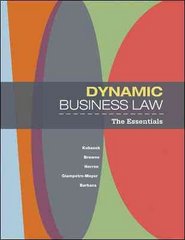


Questions 1. Consider the following model of a closed economy where y, p and m are the natural logarithms of output, price level and money supply respectively. E is the expectations operator and & is a random disturbance term (E - N (0, o")). Equation (1) is a variant of the Phillips curve, equation (2) is a money demand function and equation (3) is the authorities money supply rule. yt = 20 + 0.25 (pr Erupt) (1) yt = 30 + 0.25 (m;- Pt) m; = 5 + Et (3) a) Solve for: The full employment equilibrium value of y The expected price level b) If & = -2, what is: i) The price level? ii) The output level? Answer: Three steps: 1. Solve the model, treating expectations as exogenous 2. Take the expected value of this solution at the date of the expectations and solve for the expectations 3. Substitute the expectations solutions into the solution in 1 and obtain the complete solution Substitute equations (1) and (3) into (2) to get the reduced form:20+0.25(pr Empt) = 30 + 0.25(5+ Ex - P/) 0.25 & + 11.25 = 0.5 p, - 0.25 Empt (4) In order to get Exp run the expectations operator along equations (1) - (3) : Ery: = 20 + 0.25(Et-1PI - Et-1p.) = 20 Ery: = 30 + 0.25(E-im; - Ex-1p1) Exam, = 5 Substituting Em, = 5 and By = 20 in the second expression yields solution for EMP:- Empt = 45 (5) The full employment equilibrium value of y can be found out by looking at equation (1). Note that in equilibrium p, - Emp, = 0 (no expectation error in equilibrium, shocks are 0). It follows that y' = 20. Substituting (5) in (4) yields: 0.25 & + 11.25 = 0.5 p - 0.25 (45) Pt = 45 + 0.5 E; (6) b) (i) If et = -2 substituting in (6) gives the price level: Pt = 45 + 0.5 (-2) = 44 (7) (ii) Substituting (7) and (5) in (1) yields solution for output: yt = 20 + 0.25 (44- 45) = 19.75 2. Consider the following model where the monetary policy will be the only policy variable affecting demand for output. For expositional purposes the income velocity of money is held constant. With these assumptions the aggregate demand for output can be written in logs as: m tv = Pe + y: (1)The above equation is the equation of exchange in logs (equation that addresses the relationship between money and price level, and between money and nominal GDP. The equation tells us that total spending (M x V) is equal to total sales revenue (P x Y)). To complete the model we need to add the aggregate supply equation and a money supply rule. y: = y + a(p, - Empt) (2) my = Byt-1+Et (3) a) Given that agents form expectations rationally, find a solution for (i) yt and (ii) pr. b) If expectations are backward looking i.e. p"r p" = Y(PM 1- P"t ) where 0














